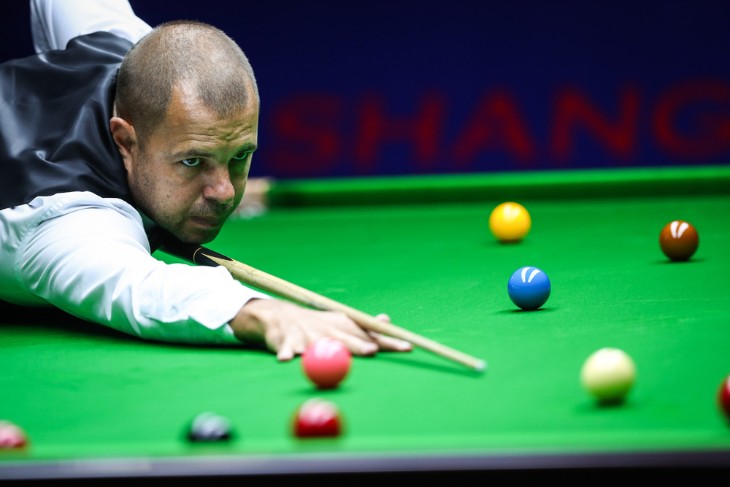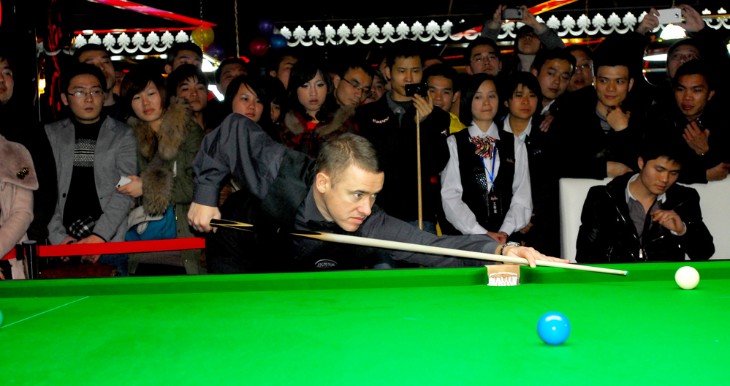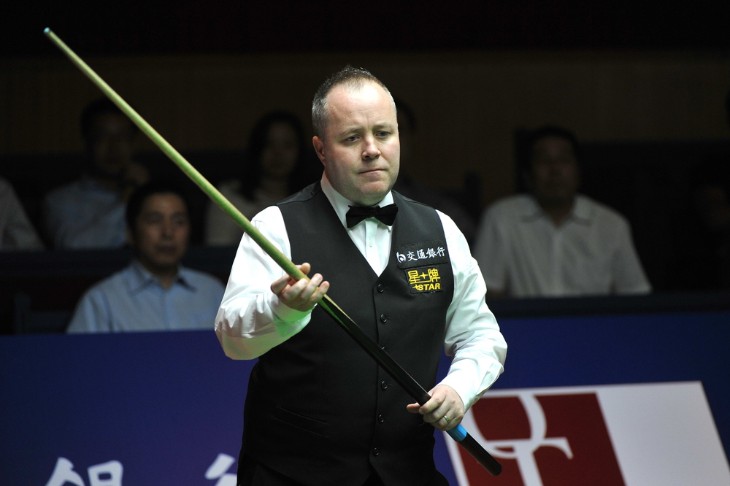- Identifying Common Signs of Wear and Tear on Snooker Cues
- Essential Tools and Materials for Cleaning a Snooker Cue
- The Initial Steps: Pre-Cleaning Inspection and Preparation
- Removing Surface Dirt and Grime: Techniques and Tips
- Deep Cleaning the Shaft: Methods and Products to Use
- Caring for the Cue Tip: Maintenance and Replacement Tips
- Polishing and Protecting the Butt of the Cue
- Addressing Specific Issues: Warping, Dents, and Scratches
- Regular Maintenance Schedule: Ensuring Longevity of Your Cue
- Do's and Don'ts in Snooker Cue Care
- Conclusion
The maintenance of a snooker cue is vital for both casual players and professionals alike. A well-maintained cue not only ensures a consistent performance but also prolongs its lifespan, saving money in the long run. Regular care prevents the build-up of dirt and oils transferred from the hands, which can affect the smooth glide of the cue through the fingers. Additionally, a clean cue is less prone to the absorption of moisture from the environment, reducing the risk of warping and other damage.
Furthermore, the condition of a snooker cue significantly influences the accuracy and precision of shots. Over time, cues can develop imperfections such as dents, warping, and a worn tip, all of which can hinder a player's ability to execute shots with the desired accuracy.
Identifying Common Signs of Wear and Tear on Snooker Cues
Recognising the signs of wear and tear on a snooker cue is an essential skill for any player. One of the most common issues is the build-up of grime and dirt on the shaft. This build-up can lead to a lack of smoothness in the stroke, affecting the player's control and precision. Another visible sign of wear is the condition of the tip. A tip that is too flat, misshapen, or hardened can drastically alter the impact on the cue ball, leading to inconsistent play.
In addition to these, players should be alert to any changes in the straightness of the cue. Warping, though sometimes subtle, can have a significant impact on play. It is often caused by exposure to heat or moisture and can be detected by rolling the cue on a flat surface. Scratches and dents, while primarily cosmetic, can also affect the feel of the cue in hand, which can be distracting or uncomfortable for the player. Regular inspections for these signs can help in timely maintenance and repair, ensuring the cue remains in optimal condition.
Essential Tools and Materials for Cleaning a Snooker Cue
When considering how to clean a snooker cue, selecting the right tools and materials is a crucial step. The basic kit for cleaning should include a soft, non-abrasive cloth, typically microfibre, to avoid scratching the wood. For deeper cleaning, cue shaft cleaner solutions are available, specifically designed to remove grease and dirt without damaging the wood. Additionally, a high-quality cue wax or polish is recommended to provide a protective finish after cleaning.
For the tip of the cue, a tip shaper and scuffer are essential to maintain its rounded shape and texture. These tools help in the even application of chalk and improve the grip on the cue ball. A small, fine-grit sandpaper can also be useful for smoothing out minor imperfections on the shaft or the tip. It's important to choose materials and tools that are specifically designed for snooker cues, as using inappropriate products can cause irreparable damage.

The Initial Steps: Pre-Cleaning Inspection and Preparation
Before starting the actual cleaning process, a thorough pre-cleaning inspection is necessary. This involves examining the entire length of the cue for any signs of damage, such as cracks, dents, or warping. Paying special attention to the ferrule and the joint of the cue is also important, as these areas are prone to wear and tear. Once the inspection is complete, preparing the cue for cleaning involves wiping it down with a dry cloth to remove any loose dirt or debris.
In this preparation phase, it is also advisable to disassemble the cue if it is a two-piece model. This allows for easier handling and more thorough cleaning, especially in the joint area. All the tools and materials required for cleaning should be organised and within easy reach. This organisation not only streamlines the process but also ensures that each part of the cue receives the attention it needs. Remember, the goal is not just to clean the cue but to maintain its condition and functionality, an essential part of knowing how to clean a snooker cue.
Removing Surface Dirt and Grime: Techniques and Tips
The first step in how to clean a snooker cue is to address the surface dirt and grime that accumulates through regular use. Begin by gently wiping the shaft with a soft, dry microfibre cloth. This initial wipe down removes loose dirt and prepares the surface for a more thorough cleaning. For persistent grime, slightly dampen the cloth with water; however, it is crucial to avoid excessive moisture as this can damage the wood.
For tougher stains or built-up grime, a specialised cue shaft cleaner can be applied. These cleaners are formulated to break down oils and dirt without harming the cue’s finish. Apply the cleaner sparingly to the cloth, not directly onto the cue, and gently rub it along the shaft in a straight motion, from the ferrule to the butt. This technique ensures an even cleaning without over-saturating any part of the cue. After cleaning, the shaft should be immediately dried with a clean, dry cloth to prevent any moisture damage.
Deep Cleaning the Shaft: Methods and Products to Use
Deep cleaning the shaft of a snooker cue is essential for maintaining its smoothness and ensuring a consistent stroke. For this, a slightly more abrasive cleaner, such as a cue shaft smoother or fine-grit sandpaper, can be used. These tools gently remove the very top layer of the shaft, eliminating embedded dirt and smoothing out any minor imperfections. It’s important to use these tools sparingly and with gentle pressure to avoid damaging the wood.
Once the shaft has been smoothed, applying a cue wax or polish is the next step. These products not only restore the shine of the cue but also create a protective layer that repels dirt and moisture. Apply the wax or polish in a thin layer, using a clean cloth, and then buff it to a shine. This not only enhances the appearance of the cue but also contributes to its performance and longevity. The process of deep cleaning, while more involved, is a critical component of how to clean a snooker cue, ensuring that it remains in top condition for optimal play.
Caring for the Cue Tip: Maintenance and Replacement Tips
The cue tip is a critical component of a snooker cue, and its maintenance is an integral part of how to clean a snooker cue. Regularly inspecting the tip for signs of wear, such as flattening or hardening, is crucial. A tip in poor condition can significantly affect your play, altering the cue ball's trajectory and spin. When the tip shows signs of excessive wear, it is time to consider replacing it. Choose a tip that matches your playing style, as they come in various degrees of hardness.
For routine maintenance, lightly scuffing the tip with a tip scuffer helps maintain its texture, which is essential for optimal chalk retention. Chalking the tip before every shot is also vital for preventing miscues. When replacing the tip, ensure it is perfectly aligned with the ferrule and securely glued. After attaching a new tip, it must be properly shaped to match the curvature of the cue ball. This process, while meticulous, is essential for ensuring the tip performs well and contributes to the overall effectiveness of the snooker cue.
Polishing and Protecting the Butt of the Cue
While the shaft and tip often receive the most attention, the butt of the cue also requires care in the process of how to clean a snooker cue. The butt, typically made from various woods or synthetic materials, can become dull over time. To restore its shine, use a high-quality wood polish or a cue polish specifically designed for snooker cues. Apply a small amount of polish to a clean cloth and gently rub it into the butt in a circular motion. This not only enhances its appearance but also provides a protective layer against moisture and dirt.
After polishing, buff the butt with a dry cloth to bring out a natural shine. For cues with intricate inlays or decals, use a soft brush or cloth to clean these areas without damaging them. Regular polishing not only maintains the aesthetic appeal of the cue but also protects it from environmental factors such as humidity, which can cause warping or other damage over time. Remember, a well-maintained butt is not only about looks; it also contributes to the overall balance and feel of the cue, impacting your comfort and performance during play.
Addressing Specific Issues: Warping, Dents, and Scratches
In the context of how to clean a snooker cue, addressing specific issues such as warping, dents, and scratches is crucial for maintaining its integrity. Warping can be a significant problem, often caused by exposure to extreme temperatures or humidity. To check for warping, roll the cue on a flat surface and observe if it rolls smoothly or wobbles. If a cue is warped, it is often challenging to repair and might require professional assistance or even replacement.
Dents and scratches, while usually cosmetic, can affect the feel of the cue in your hands. Minor scratches can often be buffed out using a fine-grit sandpaper, followed by polishing to restore the finish. Dents, however, can be trickier to address. Small dents might be lessened by applying a damp cloth and gently heating the area, which can sometimes cause the wood to swell back to its original shape. It's important to approach these repairs cautiously, as improper techniques can further damage the cue.

Regular Maintenance Schedule: Ensuring Longevity of Your Cue
Establishing a regular maintenance schedule is a key aspect of knowing how to clean a snooker cue effectively. Regular maintenance not only keeps the cue in optimal playing condition but also extends its lifespan. It's recommended to do a basic cleaning, including wiping down the shaft and butt and inspecting the tip, after every use. This prevents the build-up of oils and dirt from your hands.
More thorough maintenance, such as deep cleaning the shaft, polishing the butt, and checking for warping or damage, should be done every few months, depending on usage. Replacing the tip should be done as needed, typically once it shows significant wear. By adhering to a consistent maintenance schedule, you ensure that your snooker cue remains in prime condition, offering the best performance and reducing the likelihood of costly repairs or replacements in the future.
Do's and Don'ts in Snooker Cue Care
When learning how to clean a snooker cue, it's essential to be aware of the do's and don'ts to prevent damage. Among the do's, always use a soft, non-abrasive cloth for cleaning to avoid scratching the wood. Use only products specifically designed for snooker cues, as household cleaners can be too harsh and damage the cue's finish. Regularly inspect your cue for any signs of wear or damage, and address issues promptly to prevent them from worsening.
On the other hand, there are several practices to avoid. Never leave your cue in extreme temperatures or direct sunlight, as this can lead to warping or fading of the wood. Avoid over-tightening the joints on two-piece cues, as this can damage the threading. When chalking the tip, do it gently to prevent wearing down the tip too quickly. By following these guidelines, you can ensure your cue remains in top condition, ready for your next game.
Conclusion
In conclusion, understanding how to clean a snooker cue and maintaining it properly is vital for any player, whether amateur or professional. Regular cleaning and maintenance not only keep the cue looking great but also ensure it performs at its best. A well-cared-for cue offers a smoother stroke, better control, and greater consistency in play. Furthermore, by extending the life of the cue, you save money in the long run by avoiding the need for frequent replacements.
For more information:




.webp)






